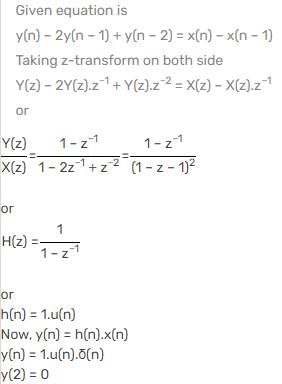Test: Discrete-Time Fourier Transform - Electrical Engineering (EE) MCQ
10 Questions MCQ Test - Test: Discrete-Time Fourier Transform
Given a discrete time signal x[k] defined by x[k] = 1, for -2 ≤ k ≤ 2 and 0, for |k| > 2. Then, y[k] = x[3k - 2] is ______________
A discrete time signal is given as X [n]  The period of the signal X [n] is ______________
The period of the signal X [n] is ______________
 The period of the signal X [n] is ______________
The period of the signal X [n] is ______________F(t) and G(t) are the one-sided z-transforms of discrete time functions f(nt) and g(nt), the z-transform of ∑f(kt)g(nt-kt) is given by _____________
A Discrete signal is said to be even or symmetric if X(-n) is equal to __________
A discrete time signal is as given below

The period of the signal X [n] is _____________
The time system which operates with a continuous time signal and produces a continuous time output signal is _________
What is the steady state value of The DT signal F (t), if it is known that F(s) 
A discrete time signal is as given below X [n] = cos (n/8) cos (πn/8)
The period of the signal X [n] is _____________
The system described by the difference equation y(n) – 2y(n-1) + y(n-2) = X(n) – X(n-1) has y(n) = 0 and n<0. If x (n) = δ(n), then y (z) will be?
The Nyquist frequency for the signal x (t) = 3 cos 50πt + 10 sin 300πt – cos 100t is ___________





















